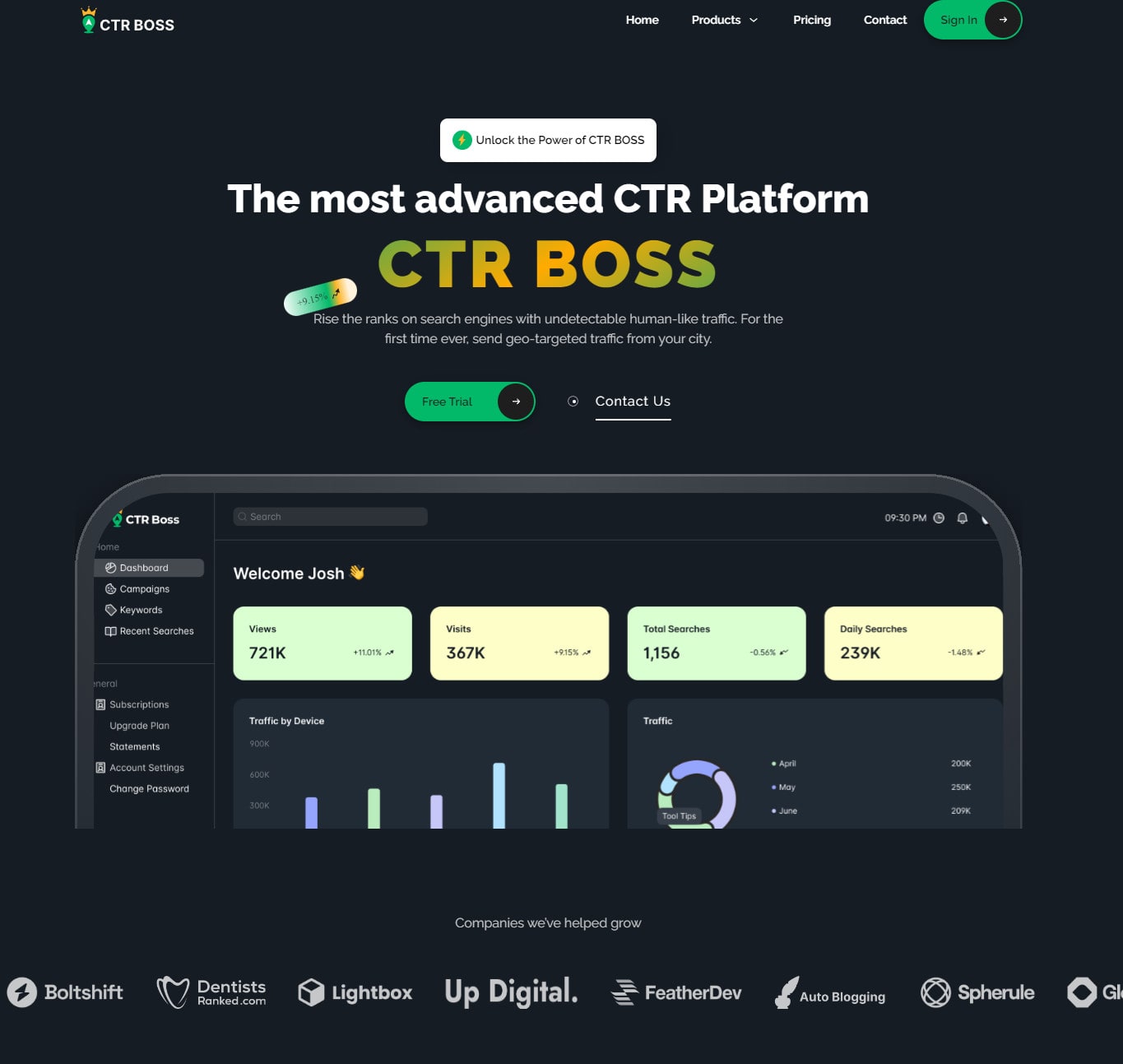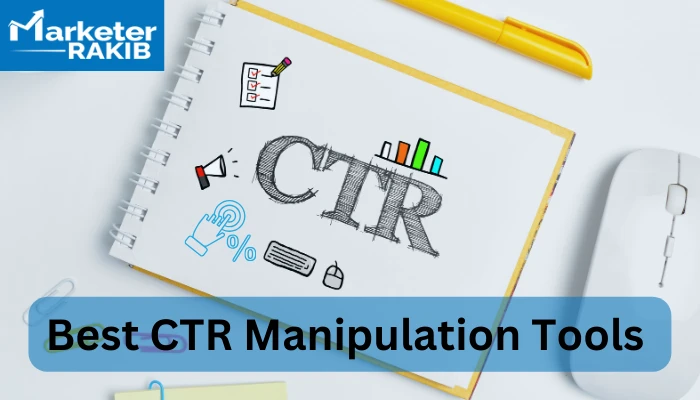Comprehending the Benefits of CTR Manipulation for Digital Marketing Success
Comprehending the Benefits of CTR Manipulation for Digital Marketing Success
Blog Article
Exactly How to Measure the Impact of CTR Control on Your Advertising
Recognizing the nuances of click-through price (CTR) manipulation in marketing is essential for services striving for genuine individual interaction. By examining vital metrics such as conversion rates and bounce rates, marketing professionals can reveal potential discrepancies that may develop from artificial improvements.
Comprehending CTR Manipulation
Recognizing CTR manipulation is important for marketers looking for to optimize their campaigns and guarantee data stability. Click-through price (CTR) refers to the proportion of users that click on a certain web link to the total number of users who watch the ad or material.
The ramifications of CTR manipulation prolong beyond mere information distortion; they can threaten rely on electronic marketing. When businesses count on inflated metrics, they might invest in inefficient campaigns, inevitably damaging their return on financial investment. Additionally, systems might punish advertisers involving in such techniques, causing additional implications for their advertising efforts.
To effectively deal with CTR manipulation, marketers must create a thorough understanding of their information resources and analytics tools. By employing sophisticated monitoring methods and inspecting traffic sources, they can make certain and identify uneven patterns that their performance metrics mirror genuine individual engagement - CTR Manipulation Service. This caution is essential for fostering long-lasting success in a progressively competitive electronic landscape
Key Metrics to Examine
Reliable analysis of crucial metrics is essential for assessing real performance of marketing projects and spotting possible CTR adjustment. One primary metric to think about is the Click-Through Price (CTR) itself, which represents the proportion of users that click an advertisement to the total number of users who view it. An unexpected spike in CTR might suggest control, demanding additional investigation.
Additionally, keeping an eye on conversion prices is crucial. A high CTR with a low conversion price might signal that the clicks are not genuine or that the targeting is misaligned (CTR Manipulation Service). In a similar way, assessing bounce prices can give understanding right into customer engagement; a high bounce rate after a click may recommend that the website traffic is not quality-driven.

Tools for Measurement

Additionally, A/B screening tools such as Optimizely or VWO can promote testing with various advertisement variations to figure out which aspects drive higher CTR. These tools allow marketers to assess real-time performance and make data-driven modifications. Social media analytics devices, like Hootsuite or Sprout Social, can also be crucial in understanding CTR within social platforms, giving understandings right into target market habits and involvement patterns.
Furthermore, heat mapping devices, such as Hotjar, can reveal how individuals connect next with ads, helping to determine where enhancements can be made. Combining these tools develops a robust dimension framework, allowing marketing experts to recognize the effects of CTR adjustment effectively. Inevitably, the appropriate choice of measurement devices is critical for making educated advertising decisions and optimizing campaign performance.

Reviewing Long-term Results
One should take More hints into consideration the long-lasting impacts of CTR manipulation on overall advertising performance, as temporary gains can usually mask much deeper implications. Gradually, unnaturally pumped up click-through prices might bring about lessened count on from consumers and online search engine alike. When users repeatedly come across deceptive techniques, they might become hesitant to engage with the brand, leading to reduced conversion rates in the future.
Furthermore, formula updates from systems such as Google are made to focus on authentic engagement over filled with air metrics. Services that count on CTR manipulation may locate themselves punished, leading to a decrease in natural reach and presence. This can have a plunging effect on brand integrity and client loyalty, eventually threatening the really goals that the first control looked for to attain.
In addition, the information collected from controlled CTR might deceive marketing professionals in their method development. Relying upon skewed information can lead to misdirected projects that fail to reverberate with the target market, causing wasted sources and missed chances. It is important for marketing professionals to evaluate the lasting implications of CTR control and prioritize sustainable, honest interaction techniques for lasting success.
Ethical Factors To Consider in CTR Adjustment
In the realm of digital advertising, moral factors to consider surrounding CTR control are vital. While the desire to enhance click-through prices (CTR) can bring about temporary gains, the potential long-term effects on brand name integrity and consumer count on can not be ignored. Controling CTR frequently involves tactics that may misguide users, such as clickbait headlines or deceitful marketing methods. These techniques can lead to a transient boost in website traffic however may eventually wear down customer self-confidence.
Additionally, moral worries include compliance with guidelines such as the Federal Profession Commission (FTC) standards, why not try this out which mandate openness in advertising. Stopping working to stick to these requirements can reveal businesses to lawful implications and harm their track record. Marketers must consider the effects of their methods on individual experience and the broader industry landscape.
Additionally, the surge of expert system and automation in advertising presents additional honest predicaments. The possibility for mathematical prejudice or the exploitation of consumer information questions about responsibility and fairness. Inevitably, ethical advertising techniques ought to prioritize openness, sincerity, and regard for the consumer, cultivating long-lasting partnerships that go beyond plain metrics like CTR. Balancing performance with principles is crucial for lasting success in the electronic industry.
Verdict
In conclusion, measuring the impact of CTR adjustment on advertising needs an extensive evaluation of crucial metrics, consisting of click-through rates, conversion prices, and bounce prices. Eventually, a data-driven technique ensures that advertising and marketing strategies are reliable and straightened with real individual communications.
Comprehending the nuances of click-through rate (CTR) manipulation in advertising and marketing is vital for services aiming for authentic user engagement.Reliable analysis of crucial metrics is important for assessing the true performance of marketing campaigns and finding prospective CTR control.One must consider the long-lasting impacts of CTR manipulation on overall advertising performance, as short-term gains can usually mask deeper effects.In the world of digital advertising, ethical considerations bordering CTR control are extremely important.In verdict, determining the impact of CTR control on advertising and marketing calls for an extensive evaluation of crucial metrics, including click-through rates, conversion rates, and bounce prices.
Report this page